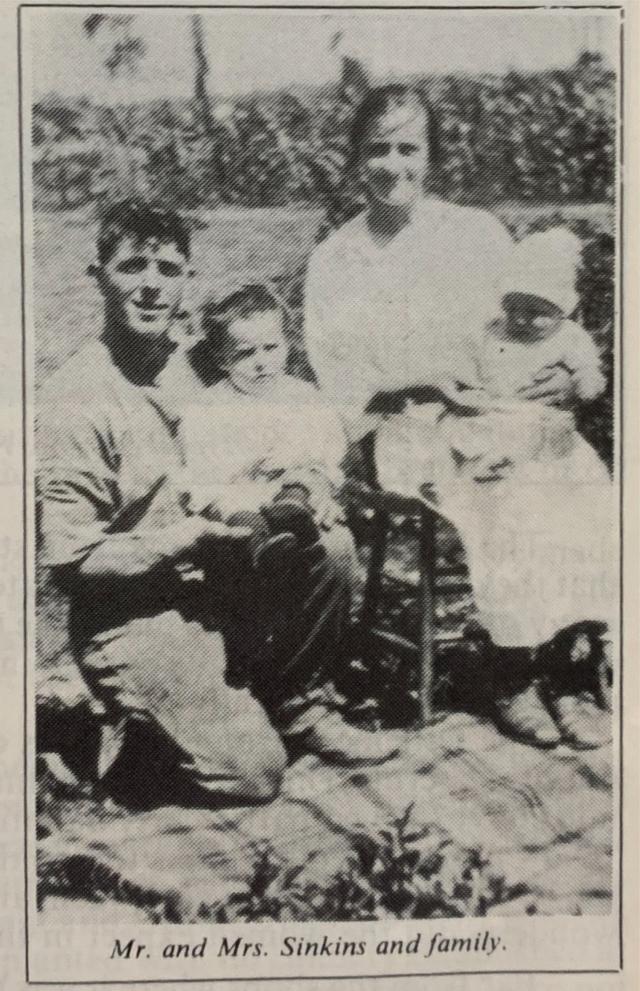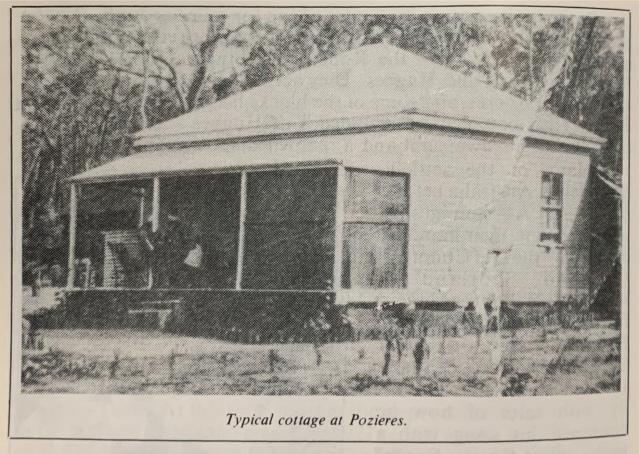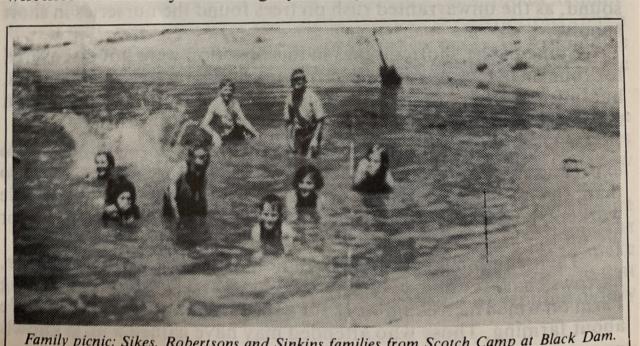The Story of Pozieres in 1923 (source: Hamilton)
‘In 1923, the report states that fruit trees planted on most of the portions at Pozieres had made good progress.
Somewhat surprisingly the population was given at only 150.
The report quotes – “Generally, the prospects of the settlers are good. Unfortunately, many have failed from one cause or another to establish themselves on the land, but it is confidently expected that some of the men now in occupation will become prosperous settlers.”
It goes on to say that “Substantial relief will be afforded settlers in the reduction of their capital liabilities as the result of an investigation of the Revaluation Board, which shortly will be completed”.
Many years were to pass before any actual relief as regards revaluation was to be afforded.
Pozieres village was the centre of life for miles around.
It even boasted its own suburb – Scotch Camp.
This comprised a small group of settlers, among them the Robertsons, Sinkins, Sykes, Brown, Sparrow, Stirling and Hughes.
They actually lived nearer to Bulle-court than Pozieres, and some of the blocks backed onto the Rabbit Fence.
Their complement included Taff Hughes – a Welshman, a character in his own right and a renowned sportsman in his day.
Many of the settlers had been in Australia before the War.
As immigrants, they had left their families behind in “the Old Country’ (England, Scotland or Wales) while they tested their fortunes in Australia.
Mr Bob Robertson, a miner in Scotland, was one of these.
He used to entertain his family with tales of how he “humped his swag with a bloke called Forgan-Smith” on his way up North after mining at Rosewood.
“Scotty” Sinkins had worked his passage on a ship to Australia, and was in Mt. Morgan when he enlisted.
From England, the Fearnsides had already established small orchards at Fleurbaix, and returned to them after cessation of hostilities.
When War was declared these men joined the A.I.F. and returned to Europe as soldiers.
After peace came, whole families were brought to Australia on special troopships – the “Demosthenes” was one of these.
Some of the families came to Pozieres.
The men sometimes came ahead of the rest of the family as they were able to work on the railway before being allotted a farm.
The families usually waited until some sort of accommodation was available.
Homes on the Settlers blocks were of two different dimensions if provided by the Government.
For married men, there was a four-roomed cottage and a two-roomed hut for bachelors.
In the married quarters, there was a choice of having an open fireplace or some of the rooms lined and ceiled.
Some of the men elected to build their own homes and many a family had to live in a bark home for some years before they could afford anything better.
The bark huts were made from stringy bark and it must be said that they were probably better insulated and more comfortable than many of the timber homes built.
The toilet was often built at quite a distance from the house – a sore point with the women folk, whose amenities were practically nil.
The settlement around Pozieres could well be said to be carved out of the scrub.
Thick timber, winding tracks, and granite boulders must have seemed particularly daunting to the womenfolk from the “Old Country”.
Cold winters too, in their wooden or tin houses, gave the lie to the myth of an ever-warm and sunny Australia.
What, one wonders, did the women expect in this new land?
Far from the shops where it was possible to replenish the larder daily, the housewives soon learned to calculate the supplies in quantity.
If milk was needed for the family, there were two options – buy a cow, or use powdered milk.
Sometimes families were able to combine resources, and homemade butter, jam, and fresh eggs were exchanged when plentiful.
Perhaps the biggest difference in the daily housekeeping was the bread.
Most of the newcomers to the Settlement had come from cities where fresh bread is an accepted part of life.
It was not so in their new home.
The baker delivered bread twice a week.
It was not long before Mrs Hannah Butler and some of the other ladies were teaching the soldiers’ wives the rudiments of bread-making, and how to make dampers.
Sewing was another skill that had to be learned, so that garments could be adapted and altered, rather than spending money on new clothes.









